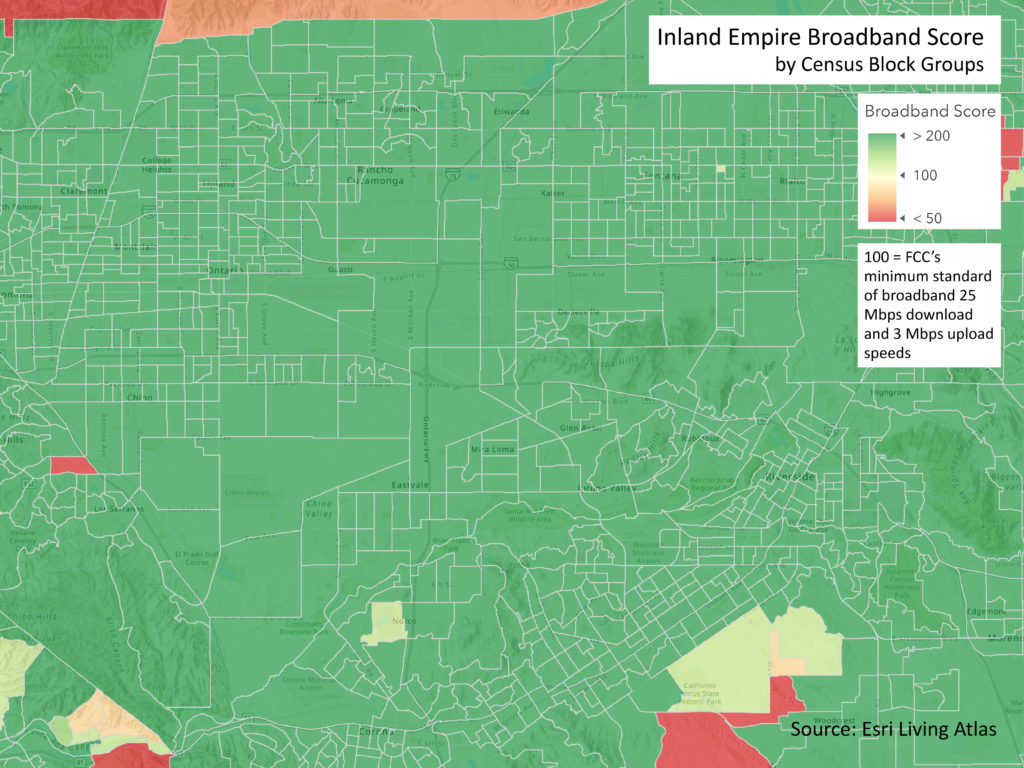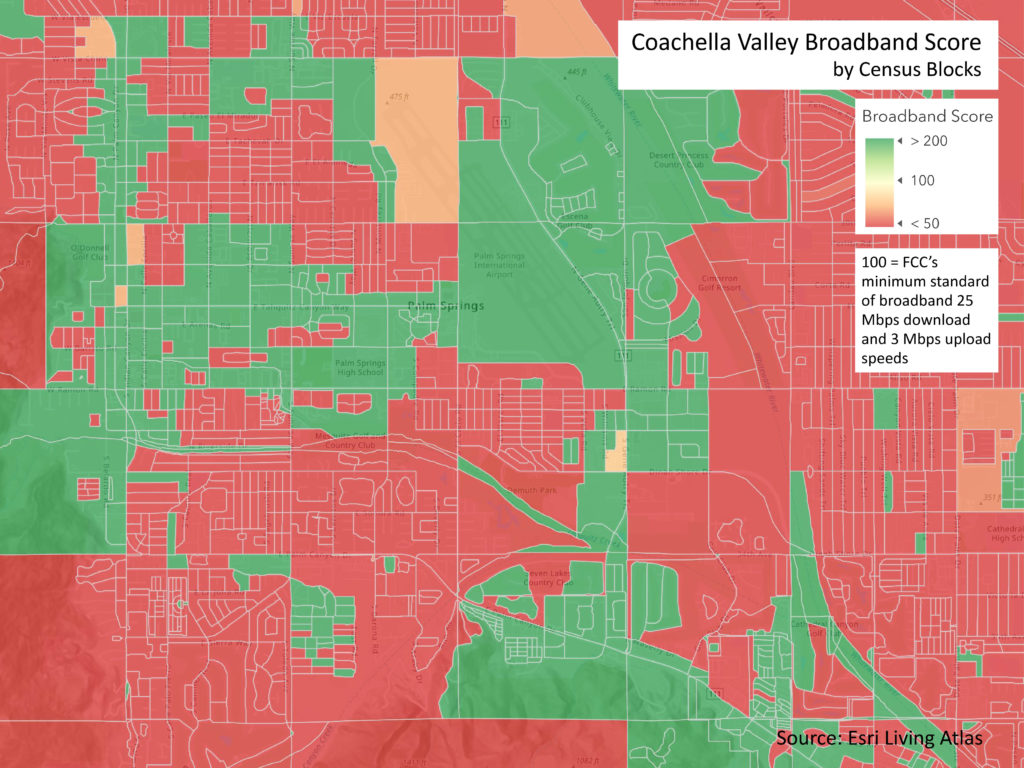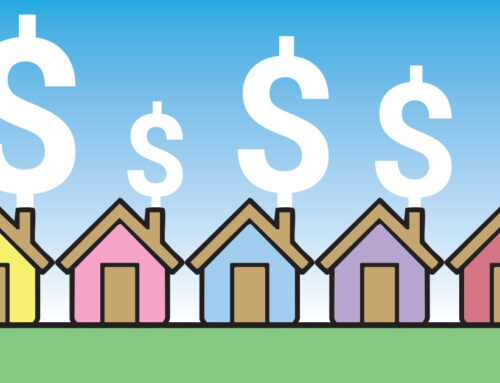Advocating for fundamental infrastructure to support and enhance entrepreneurship is a primary function of regional economic development. Access to high-speed, broadband internet is increasingly becoming an essential infrastructure. As more and more commerce, communication, education, and business workflows become virtual and remote, reliable and fast internet service has never been more necessary. The disruptions of COVID-19 have reinforced this exponentially.
Broadband means internet access that is always on (connections do not have to be reestablished each time) and high speed. Broadband providers use many different technologies for transmission, such as copper phone lines, fiber-optic lines, coaxial cables, wireless antennas, satellites, or a mix of technologies. Access to broadband in the US remains inadequate, creating a “digital divide” across the nation.
The Federal Communication Commission (FCC) has established a minimum standard for broadband: 25 megabits per second (Mbps) download and 3 Mbps upload speeds. Esri, the leading GIS software company, headquartered in Redlands, has published a Broadband Availability and Adoption Story Map that organizes broadband access and quality data into map layers. They have summarized these data into a “Broadband Score” based on the FCC’s minimum broadband standards. Following are a series of maps showing scores for the Coachella Valley.
The broadband maps tell the story
The first map shows broadband scores at the geographic level of census block groups. Yellow to green color block groups show higher than minimum scores. Even at this geographic scale, you see that availability to even minimal standard broadband is lacking in the Coachella Valley. The perimeter areas apart from the main cities are consistently below minimal standards, evidence of the pervasive digital divide.
The second map shows a similarly sized area of the Inland Empire centered on the I-15 corridor. While more urbanized than the Coachella Valley, this similarly low-density area of commuter bedroom communities is mostly covered by FCC standard broadband service or better.
The final map displays the importance of looking at data at a variety of geographic scales. If we zoom into the Census block level, we see that there is high variability of broadband availability even at the neighborhood level. Focusing on the high score area around the Palm Springs airport, very green at the block group level, we now see with more nuance that whole neighborhoods are left out of the green areas of the higher geographic level. So we even have digital divides amongst near neighbors.
As the voice for regional economic development, CVEP has been at the forefront of advocating for high-speed internet access. As more people relocate from crowded, expensive coastal tech hubs, as evidenced during the COVID crisis, access to reliable high-speed internet is a non-negotiable factor in deciding to relocate. And future opportunities for all in the Coachella Valley depend on implementing broadband throughout the Valley, especially to underserved communities on the periphery.











